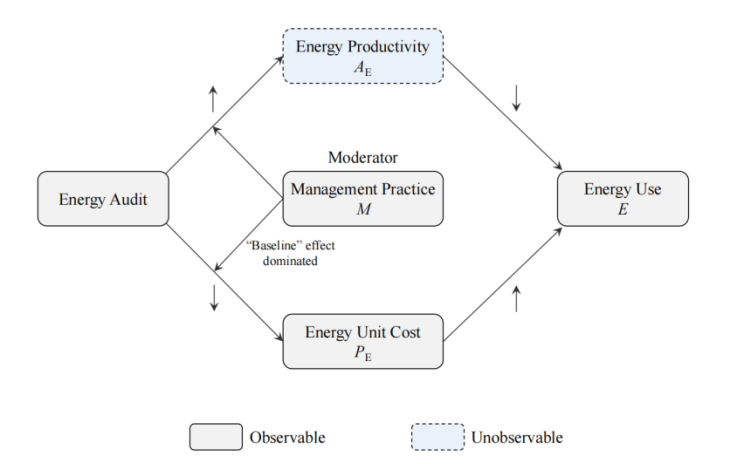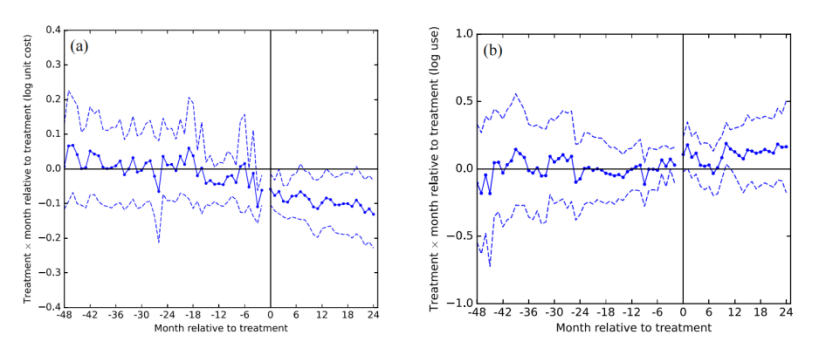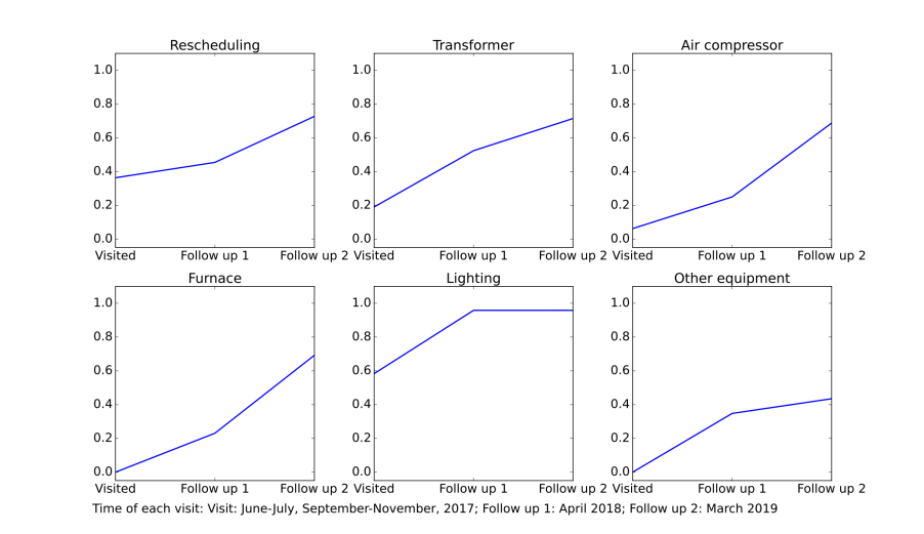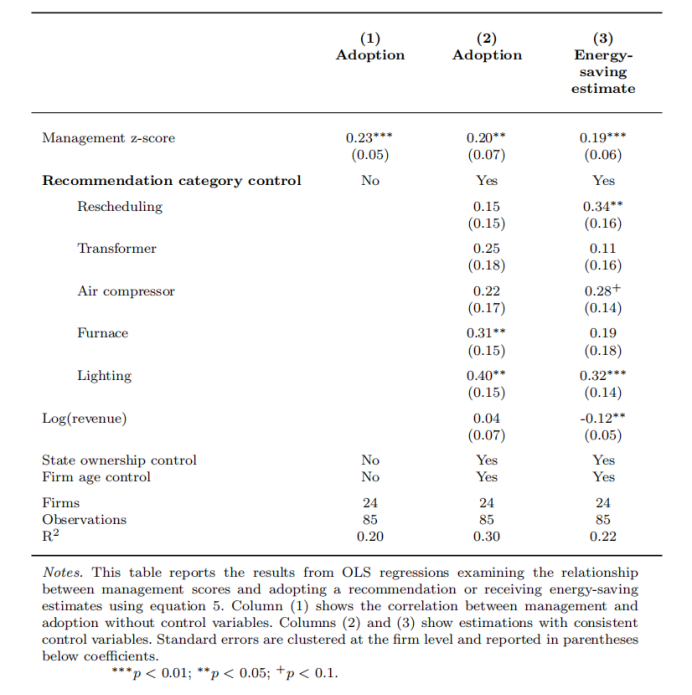According to data from the Intergovernmental Panel on Climate Change (IPCC), the industrial sector contributes approximately one-third of global carbon emissions, primarily due to fossil fuel consumption in electricity and heat production. Therefore, improving energy efficiency in this sector is crucial for addressing climate change. Despite the implementation of numerous policies in recent years, the relationship between management practices and energy efficiency improvements lacks empirical evidence, and the causal mechanisms behind informational interventions such as energy audits remain unclear. To address this, a Sino-US research team conducted a study involving dozens of manufacturing enterprises in China, providing valuable insights into energy efficiency enhancement in industrial sectors within developing countries and emerging market economies.
On March 11, Nature Energy, a subsidiary journal of Nature, published online the collaborative research titled “Management Practices and Manufacturing Firm Responses to a Randomized Energy Audit” by Zhang Da (first author), Assistant Director of the Center for Climate Governance and Carbon Finance at Tsinghua University’s Institute for Carbon Neutrality and tenured associate professor at the Institute of Energy, Environment and Economics, and Valerie J. Karplus (corresponding author), professor at Carnegie Mellon University’s Department of Engineering and Public Policy.
The research team conducted a randomized intervention experiment involving 48 manufacturing enterprises in Shandong Province, China, offering energy-saving suggestions for equipment such as transformers, lighting, and compressors. Using a difference-in-differences approach, the team analyzed the impact of energy audits on electricity consumption levels and costs. By quantifying the structured management levels of the enterprises, the study further examined the relationship between management practices and the adoption of energy-saving recommendations as well as the intervention effects. Figure 1 illustrates the potential impacts of the energy audit intervention and the connections among various variables. Notably, the "baseline effect" refers to the phenomenon where enterprises with weaker management practices are more likely to benefit from the intervention by gaining information on energy-saving measures, thereby achieving greater reductions in unit energy costs.

Figure 1: Potential Outcomes of Energy Audit Intervention and the Role of Management Practices
The study found that the energy audit intervention positively increased the adoption rates of energy-saving measures across different types of equipment. Moreover, the proportion of enterprises adopting the recommendations gradually increased over time, indicating effective utilization of the energy-saving potential of these devices (as shown in Figure 2). In terms of intervention effects, the energy audits had varying impacts on energy consumption and energy costs. Enterprises in the experimental group achieved an average reduction of 8% in unit electricity costs, although no significant change was observed in overall energy consumption. Furthermore, Figure 3 demonstrates the temporal trends of the intervention effects. The left panel shows a clear declining trend in unit electricity costs post-intervention, while the right panel indicates no statistically significant change in electricity consumption. It is worth noting that the reduction in unit electricity costs may influence the effectiveness of energy-saving recommendations in lowering electricity consumption.

Figure 2: Adoption Rates of Various Energy-Saving Recommendations

Figure 3: Intervention Effects of Energy Audits on Unit Electricity Costs and Electricity Consumption
The study also revealed that the management practices of enterprises influence both the willingness to adopt energy-saving recommendations and energy usage. As shown in Table 1, the management practice score (Management z-score) is positively correlated with the adoption rate of energy-saving recommendations. For every one standard deviation increase in the score, the likelihood of adopting recommendations increases by 20% to 30%. Enterprises with lower management levels exhibited greater reductions in unit electricity costs post-intervention compared to those with higher management levels, suggesting that energy audits can help these enterprises compensate for management deficiencies, thereby achieving cost savings and efficiency improvements. Additionally, the study found that the intervention effects vary depending on the type of energy-saving recommendation. Recommendations targeting transformers were the primary factor influencing the outcomes, reducing unit electricity costs by 16%. This is because many enterprises with weaker management practices had previously submitted excessively high maximum load reports to power companies, leading to increased fixed costs in electricity billing. Addressing this issue through relatively straightforward recommendations yielded significant positive impacts.

Table 1: Correlation Between Management Practice Scores and Adoption Rates of Energy-Saving Recommendations
This study provides empirical evidence for understanding energy efficiency improvements in the industrial sectors of developing countries and emerging market economies. The findings indicate that energy audits hold potential for enhancing enterprise energy efficiency, particularly for those with weaker management practices. However, the actual energy-saving and emission-reduction effects of such measures are influenced by multiple factors. Therefore, in addition to strengthening internal management practices, policymakers should also focus on external incentives, such as carbon pricing policies, to promote energy efficiency. By leveraging the synergistic effects of internal and external incentives, energy-saving and emission-reduction goals can be achieved in an economical and effective manner.
This research was supported by the Carbon Neutrality and Energy System Transformation (CNEST) Program, the National Natural Science Foundation of China, the US National Science Foundation, and the MIT Sloan School of Management Faculty Research Funding Program. Part of the research content was previously published as a preprint in the MIT Center for Energy and Environmental Policy Research Working Paper Series.
Related Article Link:
https://www.nature.com/articles/s41560-025-01729-5
 Latest recommendations
Latest recommendations


